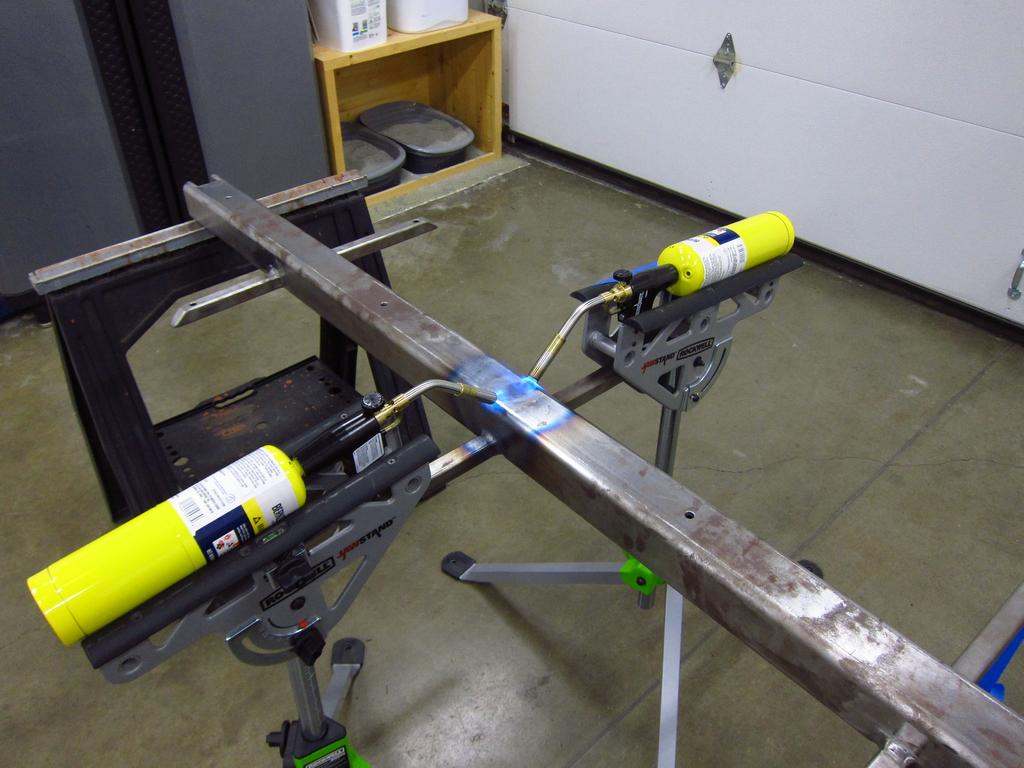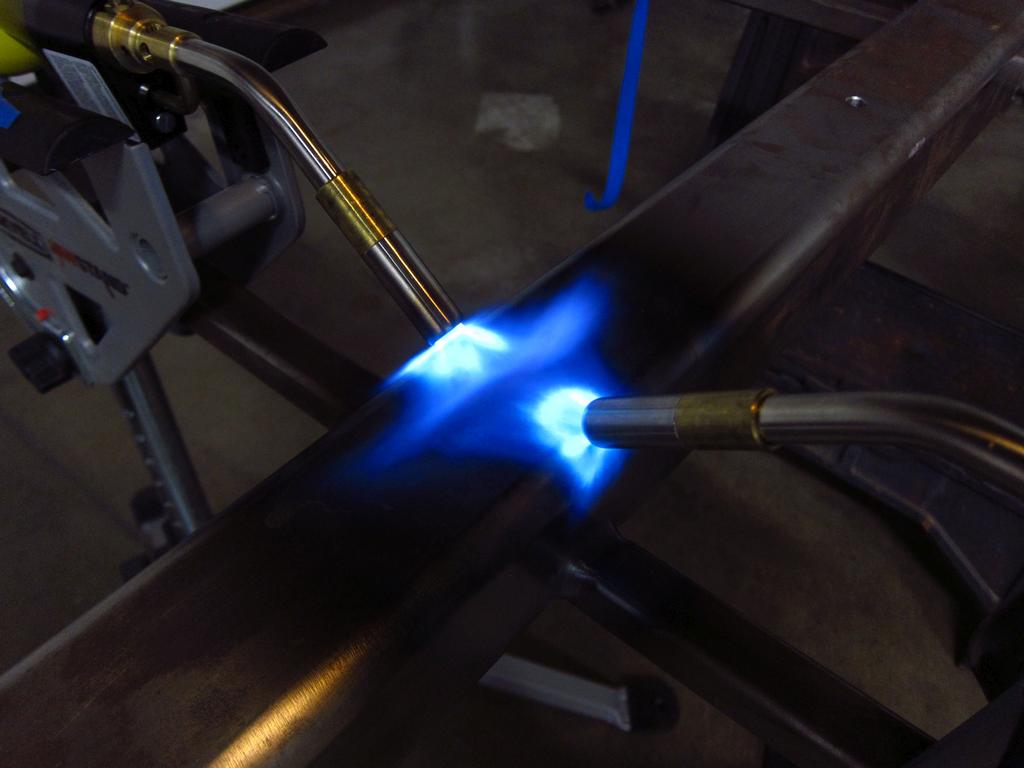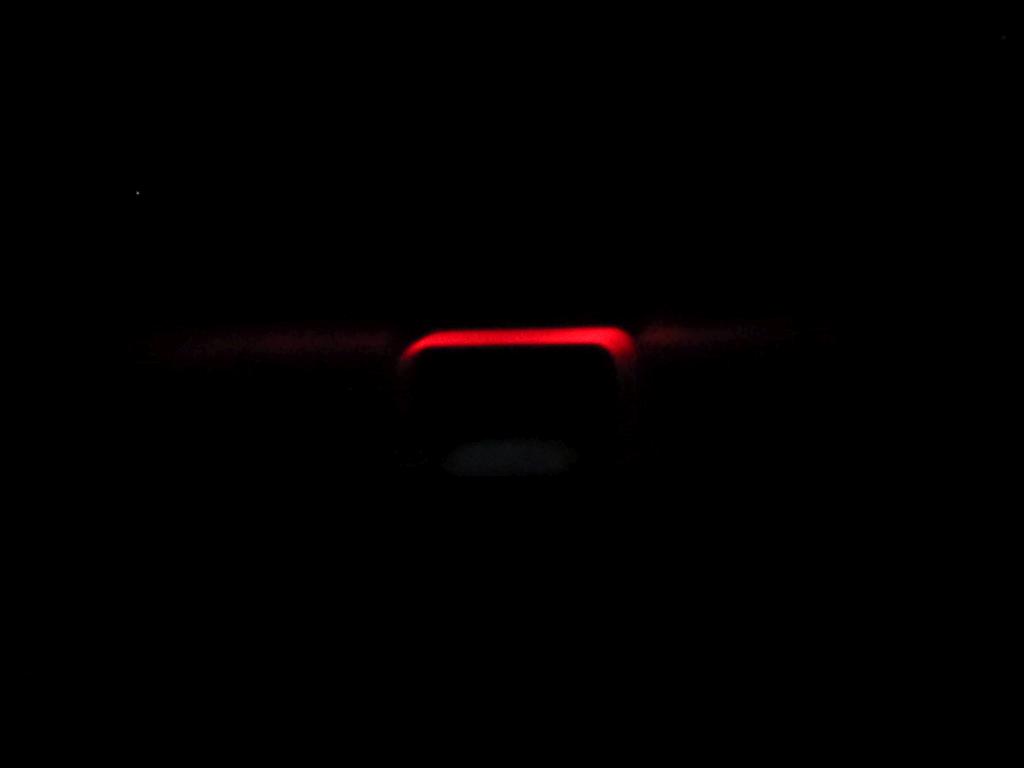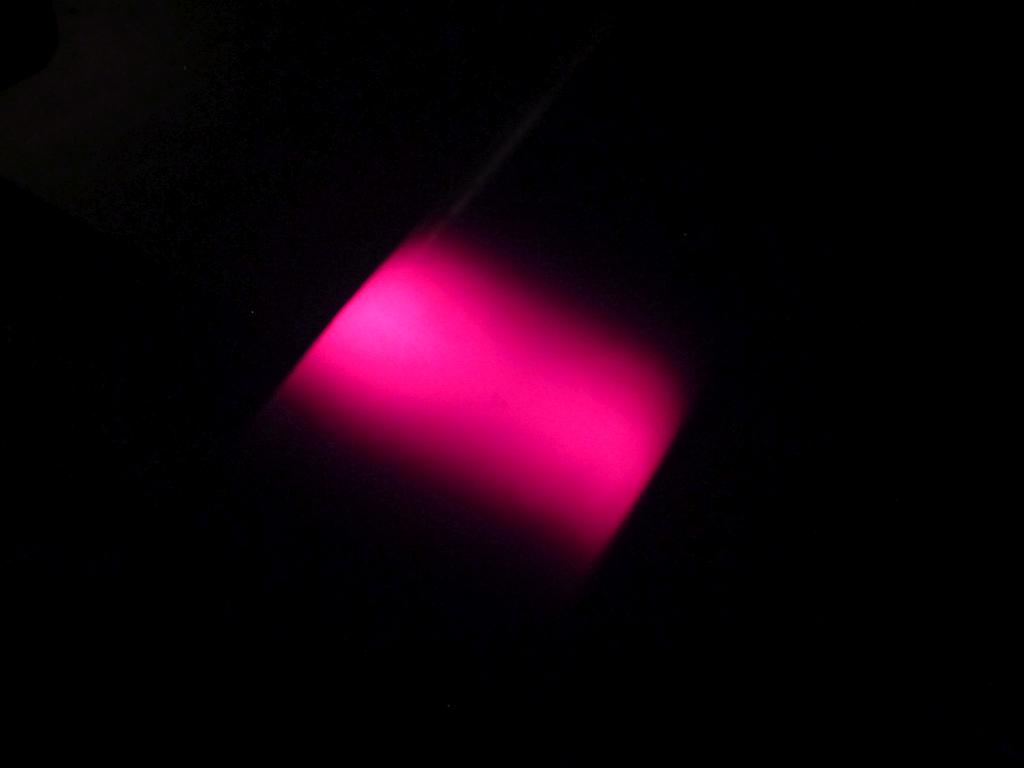I need some input from r3v's expert welders. A project I am working on (personal project) involves a 3x3x0.25 rectangular mild steel spar ~72" long with some 1x1x0.12 rectangular cross bars MIG'ed in on one side. Since the cross bars are welded in waaay off of the main beam's neutral axis, I now have a nice warped spar lol. So I have done some reading and found guidance on heat straightening in some ASTM and DOT papers, and while I certainly would not trust myself to do this on a structural member, I am happy to give it a shot on this.
So I have two ~13000 Btu/hr MAP/PRO torches and I rigged them up to apply heat symmetrically. I don't have an IR thermometer or temperature crayons, so I am sort of going on color.


Based on what I have read, mild steel of this color (below) should be somewhere in the 1200-1400F range. The first pic is from the inside (looking down the end of the tube) so I know I got decent heat penetration, and the second pic is on the outside. The actual color is dimmer and more reddish than shown since it is hard to get a camera to show this sort of thing well.


The white papers on this seem to indicate that 1250F is the upper temperature limit that one would shoot for so as to not cause deleterious effects to the grain structure and mechanical properties. I did a couple of rounds of heating prior to this, to zero effect, so I figured I would try heating a little more. The above pictures produced zero effect after cooling. Essentially if I lay my 36" straight edge over the center, I have a 0.050" gap, and heating has not changed it at all. Since I have the 3 cross bars, I need to straighten things in 3 places, once I figure out WTF I am doing anyway.
I did do an additional round of heating after these photos, and in that one I heated the sides so that about 2/3 of the height on both sides was a dull orange, along with the whole top side similar to the pics. That also produced zero straightening effect (0.000" improvement after cooling).
So, what am I doing wrong here?
So I have two ~13000 Btu/hr MAP/PRO torches and I rigged them up to apply heat symmetrically. I don't have an IR thermometer or temperature crayons, so I am sort of going on color.


Based on what I have read, mild steel of this color (below) should be somewhere in the 1200-1400F range. The first pic is from the inside (looking down the end of the tube) so I know I got decent heat penetration, and the second pic is on the outside. The actual color is dimmer and more reddish than shown since it is hard to get a camera to show this sort of thing well.


The white papers on this seem to indicate that 1250F is the upper temperature limit that one would shoot for so as to not cause deleterious effects to the grain structure and mechanical properties. I did a couple of rounds of heating prior to this, to zero effect, so I figured I would try heating a little more. The above pictures produced zero effect after cooling. Essentially if I lay my 36" straight edge over the center, I have a 0.050" gap, and heating has not changed it at all. Since I have the 3 cross bars, I need to straighten things in 3 places, once I figure out WTF I am doing anyway.
I did do an additional round of heating after these photos, and in that one I heated the sides so that about 2/3 of the height on both sides was a dull orange, along with the whole top side similar to the pics. That also produced zero straightening effect (0.000" improvement after cooling).
So, what am I doing wrong here?


Comment